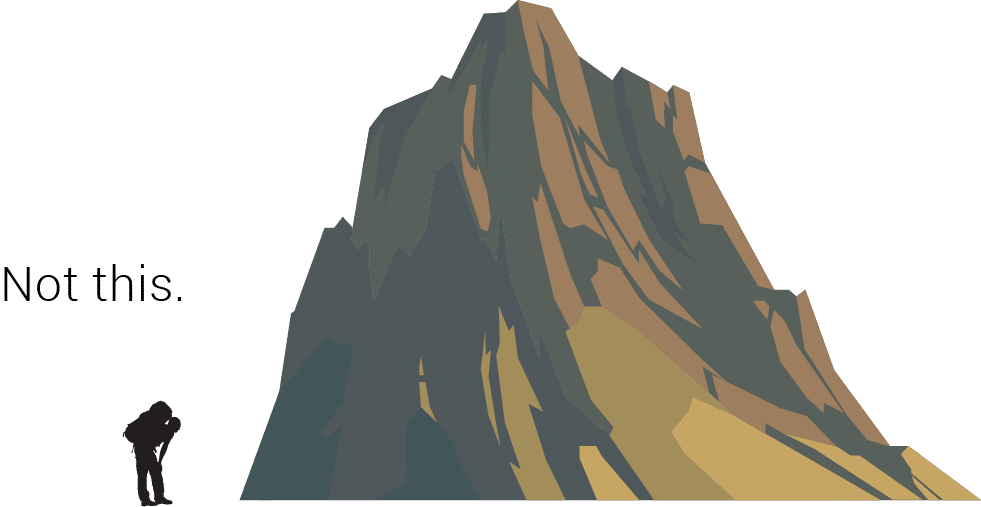
You work for a non-profit. You have experienced the challenges and disappointment of developing systems and software for your non-profit. Chances are, innovation and creativity are not flourishing, so how do you change this? Hiring third party creative firms may not be an option for you, because it can be expensive. Creating these products internally may also be impossible because design thinking has not penetrated your organization. Every great imaginative idea is fraught with impossible budget and time restrictions. I’m going to try to shed some light on how a shift of thinking to design thinking can help your organization.
First, however, I’d like to define Design Thinking.
“Most people make the mistake of thinking design is what it looks like. People think it’s this veneer — that the designers are handed this box and told, ‘Make it look good!’ That’s not what we think design is. It’s not just what it looks like and feels like. Design is how it works.”
—Steve Jobs
Simply put, Design Thinking is a structured framework, for understanding and pursuing innovation to improve user’s and customers’ experience. It’s the ability to solve complex problems, through an iterative process of research, problem defining, concepting, prototyping, and testing.
Design thinking requires empathy for users, and a lack of ego on the part of designers and product owners. Design thinking also necessitates that everybody on the team embrace this methodology to solve problems, not just designers. The act of designing is not something only designers do, the entire organization has be involved.
Why do we need design thinking?
To help explain the necessity for a shift in thinking, I’d first like to draw on an observation from the outdoors. Climbing a mountain is a daunting task. It is a much more daunting task if you view the mountain as a sheer cliff that you need to leap up in a single bound. This is basically impossible unless you are armed with a helicopter or a human cannon or to a lesser extent, some very sophisticated climbing gear and climbing experience.
So what’s the best way up the mountain if you are short on resources and past experience?
“One may walk over the highest mountain one step at a time.”
—John Wanamaker
The process of climbing a mountain for normal people is taking repetitive steps. Armed only with a pair of shoes and the ability to walk, the only other necessary ingredients are some time and the determination to climb the mountain. Challenges will present themselves in the form of boulders or slippery slopes on the journey up the mountain. These minor obstacles are much easier to manage if you think of the trek as one step at a time.


How does this relate with building web solutions?
When your non-profit needs a technical solution, and resources are short, It’s highly important to approach the problem with small, iterative steps in mind. If you or your organization go on thinking that great web products just leap into existence, rather than evolve, your organization will never be able to innovate because the leap is far too great and expensive. Rather than think about great solutions to great problems, follow the steps below to approach problems with a step-by-step method.
The steps to Design Thinking
- RESEARCH: It begins with a strong focus on the users, mapping who’s involved and what their needs and restraints are. This requires a real empathy for people and their values, an idea that resonates with most non-profits. Throw the ego and job title aside, we are all designers in this methodology.
- PROBLEM DEFINING: Next, a clear and concise definition of the question or problem worth solving is stated. This problem statement can often be condensed to a single word, or mantra.
- CONCEPTING: This is where a very wide net should be employed to brainstorm and document ideas. This is best done by a diverse group of people with different skills getting together, building on each other’s ideas.
- PROTOTYPING: Now it’s time to ask questions of all those ideas. “Is the idea realistic? How will users respond? Will it work?” In order to answer these questions, sketches, wireframes, prototypes should be employed. Prototyping should remain cheap and quick. Investing too much time or effort at this stage will result in rigid solutions that do not adapt to users’ needs.
- TESTING: Get feedback. Test and refinement of your prototypes is the key final step. This will teach you even more about your users and bridge the divide between designer or developer and user. It all begins and ends with users, who are people.
For more on how Boost Labs works with non-profits to initiate design thinking and bring innovation, give us a call or email today. With us, your organization will be climbing mountain ranges in no time.
